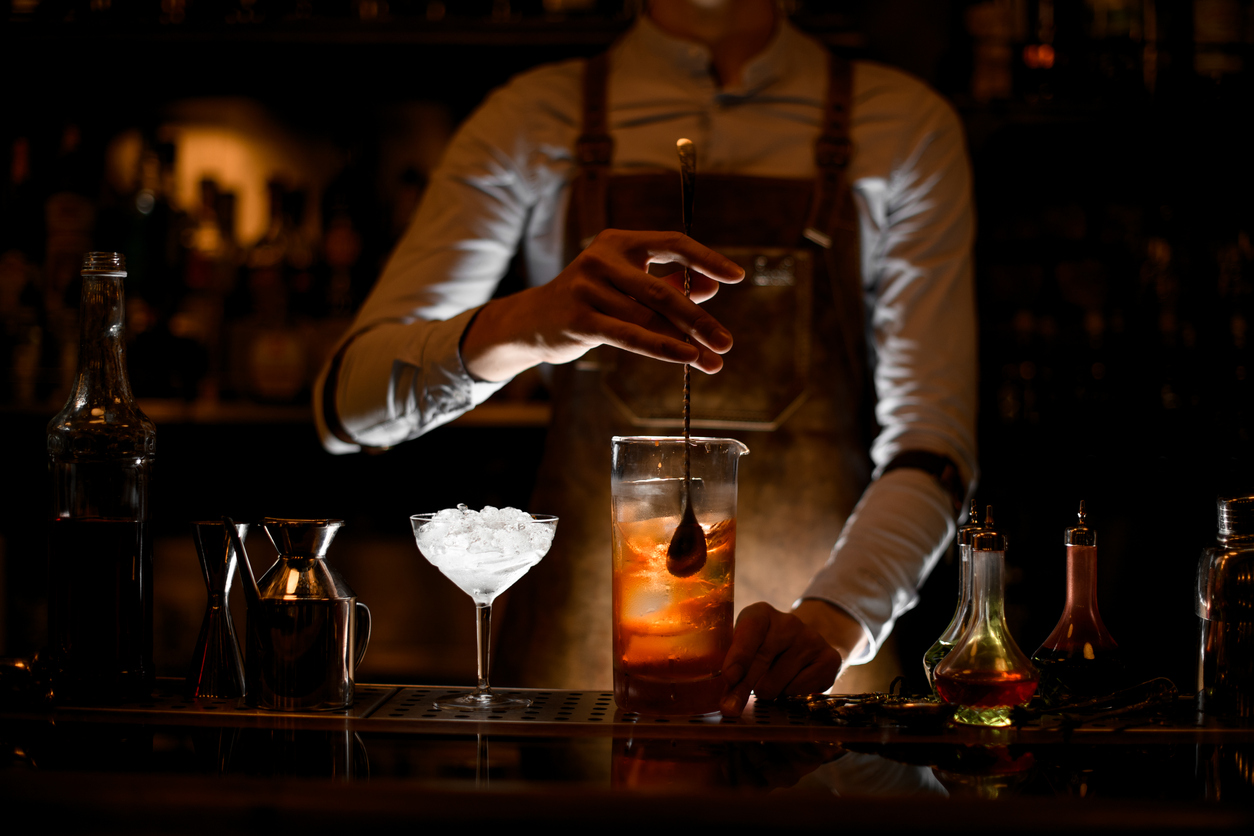

His work has been featured in several magazines, and he recently wrote the cover story for Bar Business. Today, he is able to blend his educational training and passion by working as a spirits advocate and educator, consultant, brand ambassador and journalist. While developing his knack for identfying flavors on the plate he excelled when it came to working with spirits from distillation to the creation of cocktails. His passion, interest, and curious nature about food and spirits remained powerful influences. He then went on to graduate school at the University of California at Santa Cruz, where he earned his Masters in Education, as well as the credentials he needed to be an English teacher. Here he had the opportunity to work with and learn from world-renowned chef Cal Stamenov, and sommelier Mark Jensen, formerly of the Highlands Inn. It wasn’t long, though, before he was recruited to open the Bernardus Lodge in Carmel Valley. He worked as a bartender through college at the award-winning Montrio in Monterey, CA. John went from dish washer, to busser, to waiter before finding his stride at the bar. Bitten by the hospitality bug in high school and continuing through college, he used his skills to move ahead when others may have thrown in the towel – literally. John Pomeroy is the epitome of balance – in life and in his cocktails. The hops are the star of the IPA and whatever hops are being featured should be prominent. So many different hop flavors nowadays that the American IPA’s flavors have gone global. What’s most important is that bitterness is there as well as the flavor/aroma of whatever hop is being used from the grassy white wine flavor of New Zealand’s Nelson Sauvin to the pineapple flavor of Germany’s Hallertau Blanc to the tropical notes of Australia’s Galaxy.


American IPAs can now use hops from all over the world. Since new hop varieties pop up every year thanks to breeding programs, the flavor of the American IPA has expanded outside the realm of “C” hops. American IPAs should be clear, with maybe a slight sheen but no haze. Yeast is a clean American ale yeast that allows the hops to shine with limited fruitiness from yeast esters. Cascade, Citra, Chinook and Centennial are examples of these “C” hops. “C” hops are hops that start with the letter “C” but all have a citrus and piney flavor. American IPAs can be almost dark amber in some cases so don’t count out the darker versions! Traditionally the hops used were American, with “C” hops being used most. Crystal malts were popular additions in small amounts in the 1980’s and 1990’s but that has faded mostly. How American IPAs are MadeĪmerican IPAs can be brewed solely with pale malt or with some darker base malts. The IPA became more bitter, higher ABV (Liberty ale is only 5.9% ABV but when I lived in Oregon ten years ago, IPAs would START around 7% ABV) and spawned countless specialty versions, which we will talk about in upcoming weeks. The beer style grew in popularity throughout the years, especially on the west coast where hops are grown. Earlier examples of IPA were brewed before the 1970’s (hello Ballantine IPA!) in America but these were unique styles more akin to the English IPA. The beer is what an American IPA stands for-loads of classic Cascade hops, known for its grapefruit and pine notes, large bitterness, and toasty malt backbone. So if you are looking for info about the west coast style, this is where it would be.Īccording to the BJCP guidelines, the first modern American IPA was Anchor Liberty ale, which was brewed in the 1970’s to celebrate the 200th anniversary of Paul Revere’s ride. In judging circles, we frequently have these beers together and they are not separated into different categories. The History of American IPAĪmerican IPA in my mind encompasses two styles-the traditional American IPA with its malty backbone and the “west coast” which is drier and lighter in color.

This week though we will talk about the historical beginnings of the American IPA, where it came from, and how it has evolved throughout the decades to its modern form. Similar to the golden lagers, the American IPA has shapeshifted into a subset of its own brand of many different styles. The American IPA landscape is constantly evolving and changing.


 0 kommentar(er)
0 kommentar(er)
